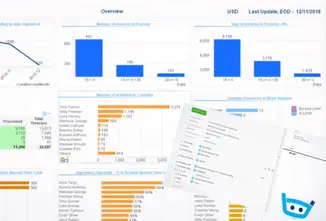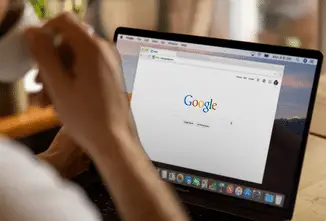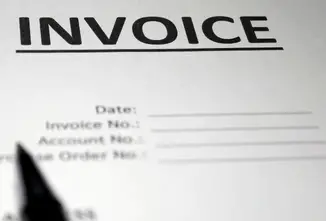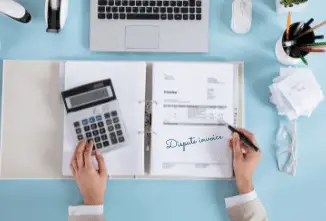If you operate a business on an invoicing system, you are probably familiar with late payments and sometimes even non-payments. Customers will fail to pay an invoice for many reasons, from lost invoices to unexpected cash flow issues.
Regardless of their circumstances, most small business owners will be hurt by unpaid invoices, and they will need to act fast if they wish to keep their businesses afloat.
Being candid with your clients and having a backup plan will come in handy.
Sending a friendly reminder to your customer that their invoice is past due is usually the first step towards collecting an invoice if your client doesn’t pay. The money subject is never easy, and you may want to do this with a lot of care.
Use this opportunity to check whether the customer was satisfied with the services you provided and whether they would wish to discuss any other projects for the future.
Some clients will want to delay payment for a variety of fake reasons, such as losing the bill, forgetting, or having an error in the invoice. If this is the case, then sending them an updated invoice will do, regardless of how many times you had sent it already.
If the client still doesn’t pay, you should be open to taking the next step, which could be difficult but necessary.
You could go the legal way to ensure that the client pays, but make sure you have explored all available resources to recover your bill.
If this happens often, it is always a good idea to institute a payment timeline that ensures that you follow up on all invoices until the customers pay and make it a requirement for them to pay on time, or else they may pay late payment fees.
To show them that you are not joking, send them a demand letter, which is a formal written document that clearly outlines what amount is owed, how long it is overdue, and that you are ready to resort to legal measures if payment is not made.
Here are some other options on what to do if clients don’t pay.
Can you take legal action against clients who don’t pay?
Yes. This is your legal right. Regardless of the size of the debt, you can always take clients who don’t pay to a small claims court to try and recover the debt.
- Step 1. Contact the creditor
Step 2. Use an agency for credit collection
Step 3. Send letter before action (LBA)
Step 4. Start letter of intent procedure
Step 5. Claim using MoneyClaim Online
Step 6. Alternative dispute resolution (ADR) If debtor agrees to it
Final Step: Court ruling, bailiffs, forcible liquidation, etc
Consider getting legal advice
A quick meeting with a lawyer or a legal advisor can provide you with more information about what legal actions might be suitable for your case.
A majority of solicitors provide a brief first meeting for a fee fixed, or for no charge.
Resource:Sample of a formal letter demanding payment, also known as Letter Before Action.
Related article: How do I sue someone for not paying an invoice?
Can a client refuse to pay an invoice?
No, not if a service was provided or goods were delivered, then customer must pay the invoice.
The official rule in the UK is that a late invoice can attract a late payment fee of up to 8% above the Bank of England’s base lending rate. Typically, this is usually used as an incentive to encourage your customers to pay on time.
Now, the only time you can refuse to pay an invoice is when the goods or services you received are faulty or unsatisfactory.
Always try and resolve this issue amicably with your client to avoid any hard feelings and loss of clients.
Immediately set up a meeting, ideally a face-to-face meeting, to discuss the issue and develop an amicable solution so both parties can benefit. You may end up coming up with an agreement for the contractor to meet your standards.
If you have had a meeting and come up with an agreement and still the client doesn’t want to pay, you may brace yourself for a legal battle.
Related article: Can I refuse to pay a late invoice?
What if a client disputes my invoice?
Getting involved in an invoice dispute with a client can potentially be stressful. There may be dispute about the amount of work completed or the amount of time involved, which could jeopardise your business relationship with the client.
Also, there is a chance that you might not get paid in full for all the work that you have already done.
The invoice dispute that you have received should clearly state ‘why’ your invoice was disputed so it should make it fairly easy to respond, assuming it is a fair dispute. Discuss the issue professionally and solve the issue as quickly as you can.
In the end, disputes over invoices are something that almost all freelancers and business owners have to deal with at some point If you take the proper steps, these disputes can be avoided all together.
How long can you chase an unpaid invoice from a client or supplier?
6 years is the statute of limitation for unpaid invoices from the date it was written.
Even when you have a simple contract, you have a legal right to chase all debts for up to 6 years, and this also includes following the payment up and making legal proceedings.
When this time elapsed, and no payment has been made on the invoice whatsoever, you cannot chase it anymore, and it is considered a bad debt.
Please note that no payment should have been made on the debt for the six years because the clock reverts and starts counting again anytime a payment is made.
Related article: How long can you chase an unpaid invoice?
How to avoid or reduce late payments from clients?
The key to avoiding or reducing late payments is to ensure that you have a rock-solid contract that stipulates all project guidelines, especially the payment rules.
The customer must read and understand ALL these rules clearly and before signing, let them confirm that they agree. A good and clear contract may get you out of a messy situation whenever there is an invoice dispute.
Six tips from us on how to avoid clients who don’t pay
Are your clients refusing to pay their overdue invoices? Here are a few tips on what you can do when clients refuse to pay their debt.
The late invoice payment challenges
Late payments have been a plague to suppliers and vendors worldwide, and for small businesses, this is a grave issue.
According to the B2B Data Digest highlights, the prevalence of late payments is global, and additionally, most governments are trying to solve this challenge.
Here are the actual statistics and facts on the late payment challenges:
According to Tide, a British banking platform, 60% of small businesses regularly have invoices paid late. [1]
This has created a significant cash flow issue and put the SMEs in severe danger of failure, particularly during the current turbulent times.
Tide recently teamed up with GoCardless, to roll out a service that will enable its members to accept their invoice payments through Direct Debit.
As a member, you will set a time for collecting the payments whenever the invoices are due.
PYMNTS Disbursement Tracker noted that 43% of companies in the UK reported having had a rise in the number of late payments over the last couple of years. This statistic covers most companies of different sizes. [2]
Most people are doing their best to stay on top of their late invoice payments, and the customer’s expectations are very high.
Unfortunately, COVID-19 has dramatically affected how businesses are staying on top of their payments.
These trends have caused most businesses to be worried about their cash flow status. A lot needs to be done.
According to PYMNTS B2B Payments Innovation Readiness Report statistics, 14.7% for overdue business to business receivables.
All outstanding invoices are not just an SMB problem now, and firms generating more than a billion dollars a year as revenue need to be concerned. [3]
Mercom India reported that there is approx. $1.49 billion in late payments that are owed to distribution and renewable generator companies.
This information they cited from the PRAAPTI portal of their ministry of the power department. [4]
Additionally, the portal indicated that 66 distribution firms owed more than $16 billion in past-due payments.
This is a little under 19,000 invoices for power generators.
Conclusion
When clients don’t pay, you are inconvenienced. This is a bad situation to find yourself in, as it hinders your business and limits your cash flow. Following our advice and tips above will help you with clients who do not pay.




![How to write past due invoice emails that work [+ tips & templates] 4 How to write past due invoice emails that work](https://brodmin.com/wp-content/uploads/2022/04/How-to-write-past-due-invoice-emails-that-work.webp)
![How to invoice international clients [+ 10-point checklist] 5 Invoicing international clients](https://brodmin.com/wp-content/uploads/2021/10/Invoicing-international-clients-0.webp)






